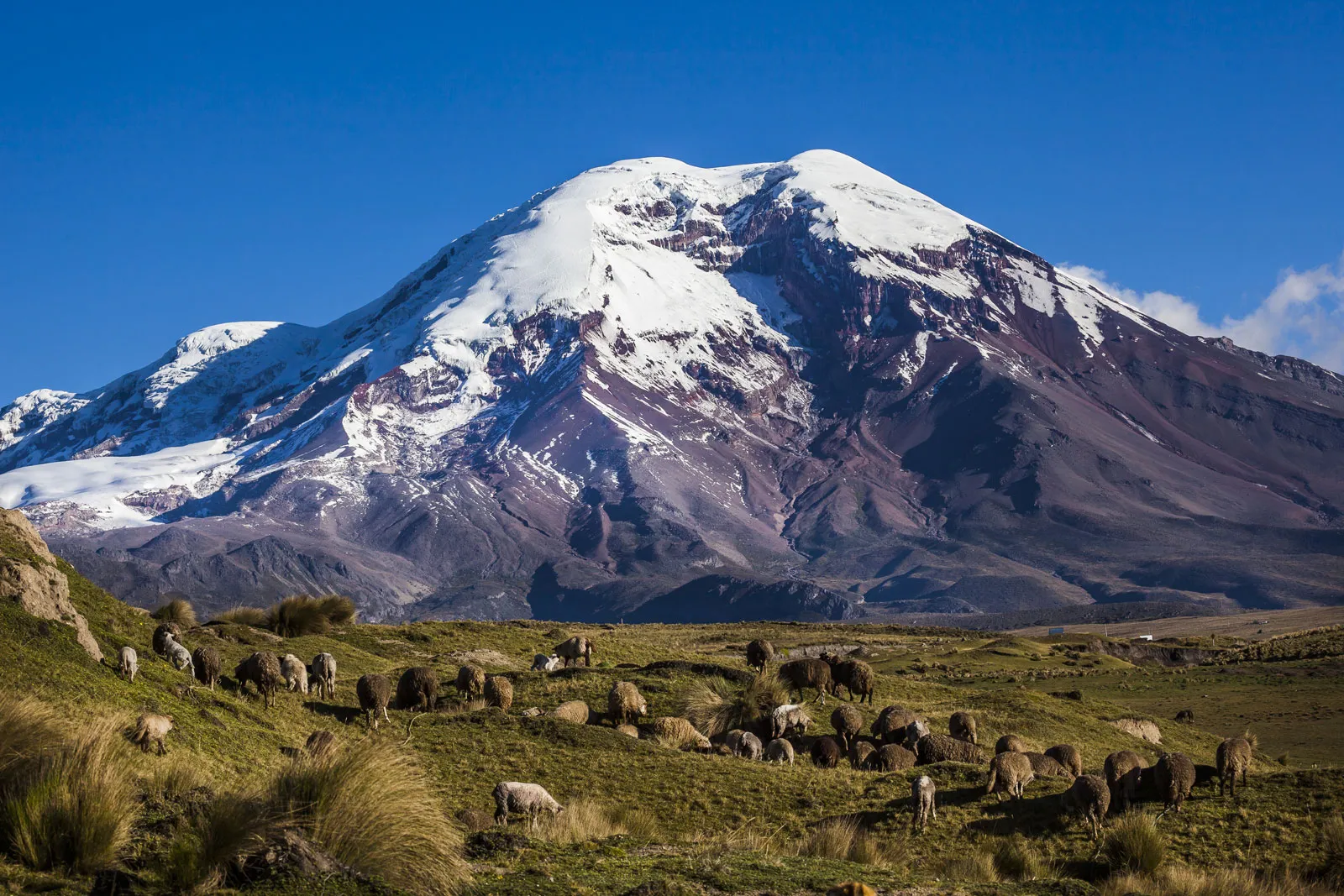mchec.org – Chimborazo, a dormant stratovolcano, towers over the Ecuadorian Andes, reaching a staggering height of 6,310 meters (20,702 feet). This makes it the highest mountain in Ecuador and, remarkably, the closest point to the edge of space on Earth, due to the Earth’s equatorial bulge.
A Geological Marvel
Chimborazo’s imposing stature is a result of millions of years of volcanic activity. Its summit is capped by a permanent glacier, a stark contrast to the barren, rocky slopes that descend towards the surrounding valleys. The volcano’s unique shape and dramatic landscape have made it a popular destination for mountaineers and nature enthusiasts.
A Biodiversity Hotspot
Despite its harsh, high-altitude environment, Chimborazo is home to a diverse range of flora and fauna. The lower slopes are covered in lush cloud forests, while the higher elevations are characterized by alpine meadows and páramo ecosystems. The volcano’s unique microclimates support a variety of endemic species, including rare orchids, bromeliads, and hummingbirds.
A Challenging Climb
Climbing Chimborazo is a challenging endeavor, requiring technical expertise, physical fitness, and the ability to withstand harsh weather conditions. The ascent typically involves navigating glaciers, steep cliffs, and exposed ridges. The summit offers breathtaking panoramic views of the Ecuadorian Andes, including other iconic volcanoes like Cotopaxi and Cayambe.
A Protected Paradise
Recognizing the ecological and cultural significance of Chimborazo, the Ecuadorian government has designated the area as part of the Sangay National Park. This protected area helps to conserve the volcano’s unique biodiversity and ensure the sustainability of local communities.
Chimborazo, with its majestic peak, diverse ecosystems, and cultural significance, is a true gem of the Ecuadorian Andes. It continues to inspire awe and wonder in all who behold its grandeur.

